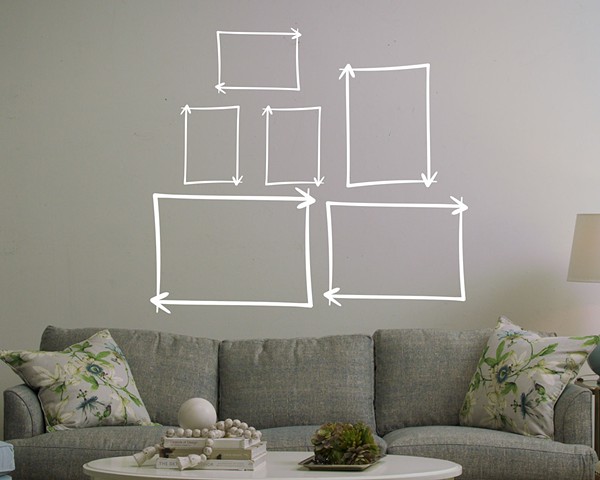Resources and General Information Commissions, Concepts, and Considerations
Basics of Wall Art Display
Whether you want a gallery wall, or you’re just hanging a solo piece of art for a minimalist impact, the instructions are basically the same.
You can likely hang your picture on just about any wall. Simply consider the weight, size, and shape of the item you’re hanging as well as the material of your walls.
You know that you need a hammer, measuring tape, and pencil for hanging pictures on wall, but other supplies will come in handy. For plaster or drywall, the weight of the item will determine exactly what you’ll need.
Lightweight
The best way to hang pictures that are light in weight is to invest in a pack of small nails.
Mediumweight
If it weighs more than a few pounds, add a few picture-hangers to your cart.
Heavy
A heavy picture or heavy mirror will require a big nail, a stud-finder or wall-plug anchors, screws that fit them, and a screwdriver.
If you’re hanging on tile or glass, you’ll need good-quality and low-profile adhesive hooks rather than nails and screws, and if you’re hanging on brick, use brick clamps.
For all pieces:
Check the back of the picture before getting started to see what type of hanging hardware you’re working with. When you flip to the back of the frame, you’ll usually find hanging wire, D rings, or a sawtooth hanger. Although this shouldn’t impact you too much, make sure you don’t buy nails that end up being too big for your D rings, for example.
Arrangement
Well-arranged framed pictures can take your home decor to the next level. The best way to hang pictures doesn’t follow a steadfast rule, but there are guidelines.
The center of a framed piece of artwork should be 57 inches above the ground—the average eye level, and the height galleries and museums typically hang their pieces. Mark the height using a pencil, then measure to find the middle of the wall from end to end, and mark where the two points meet. That’s where the middle of your artwork should go!
Now, measure the distance between the middle of the piece, and where it will catch the nail (either where the picture wire hits when bent to bear weight, or where the sawtooth hanger is. Measure that difference from your mid-point mark on the wall—that’s where the nail (or picture hanger, or wall anchor, or brick clamp) goes. Mark that spot.
You can also use painter’s tape to map out your wall design before making any holes. Start by measuring the picture frame or frames, then cut and hang painter’s tape to size to get an idea of what the wall will look like with the arrangement of your choosing. There are even some apps you can download to visualize what your wall will look like when you’ve finished.
Like many things in interior design, hanging art is subjective, so if you like it, well done.
Hanging
Now that you’ve pencil marked exactly where your nails, picture hanger, or wall anchor will go, it’s time to hang the thing. If you’re hanging a super-heavy piece, first use a stud-finder to locate a stud and check if it’s in a logical location for your nail to go. If it is, hammer a big nail in and be done. If the stud is in a weird location, use the anchor-and-screw method instead: Drill a pilot hole, tap the plastic anchor into it, then screw a screw into that, leaving it to protrude just enough that you can loop the wire or sawtooth right over it the same way you would with a nail.
If you’re not up for hammers and nails, just lean it!
The laziest way to display art is also best for anyone who is afraid of putting nail holes in the wall: Lean the frame against the back of a chair, the wall, or on a shelf somewhere. Even homes with lots of art hung up on the walls take well to a few casually leaned pieces—it actually looks intentional.
If you’re into the whole leaning thing and want to formalize a place for such activity, consider adding a shallow picture shelf in one of your rooms. It’s a perfect solution for those with constantly changing styles
• Or a picture rail
If you’re into the idea of sparing your precious walls from holes but want a more formal look than leaning, consider a picture rail: A sliver of molding that goes up near the ceiling, from which you can hang your art on hooks and strings, and then change it out whenever you feel like it.
• Leave some pieces unframed
Maybe you’ve collected some of those paintings on boards from the flea market—lovely peeling edges and all—and want to preserve some of that charm without paying for a fancy floating frame. Or maybe you just want to hang up wispy paper drawings and call it a day? Leaving artworks unframed is completely fine, even encouraged.
